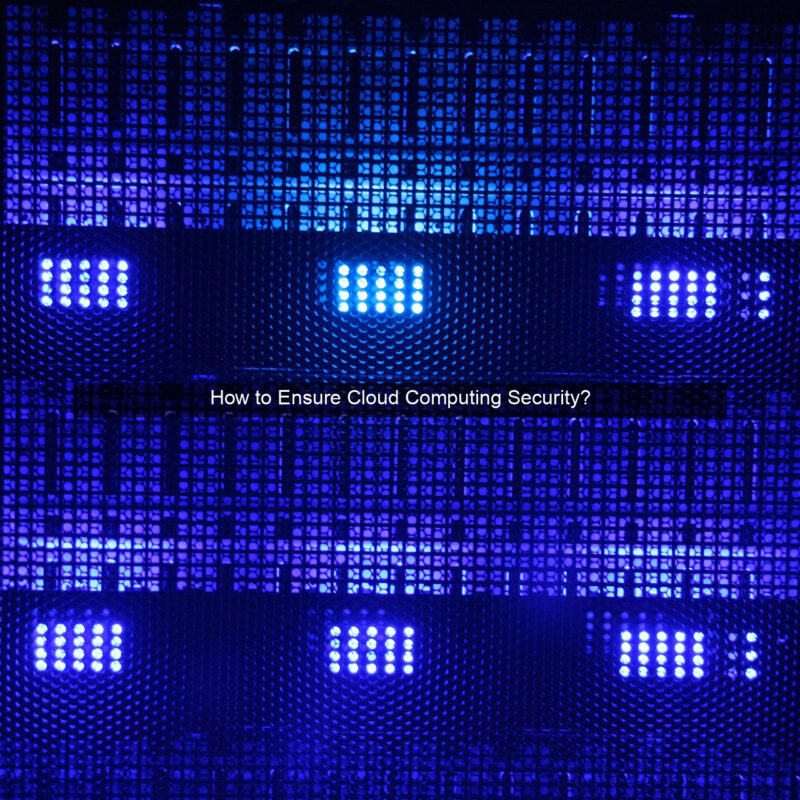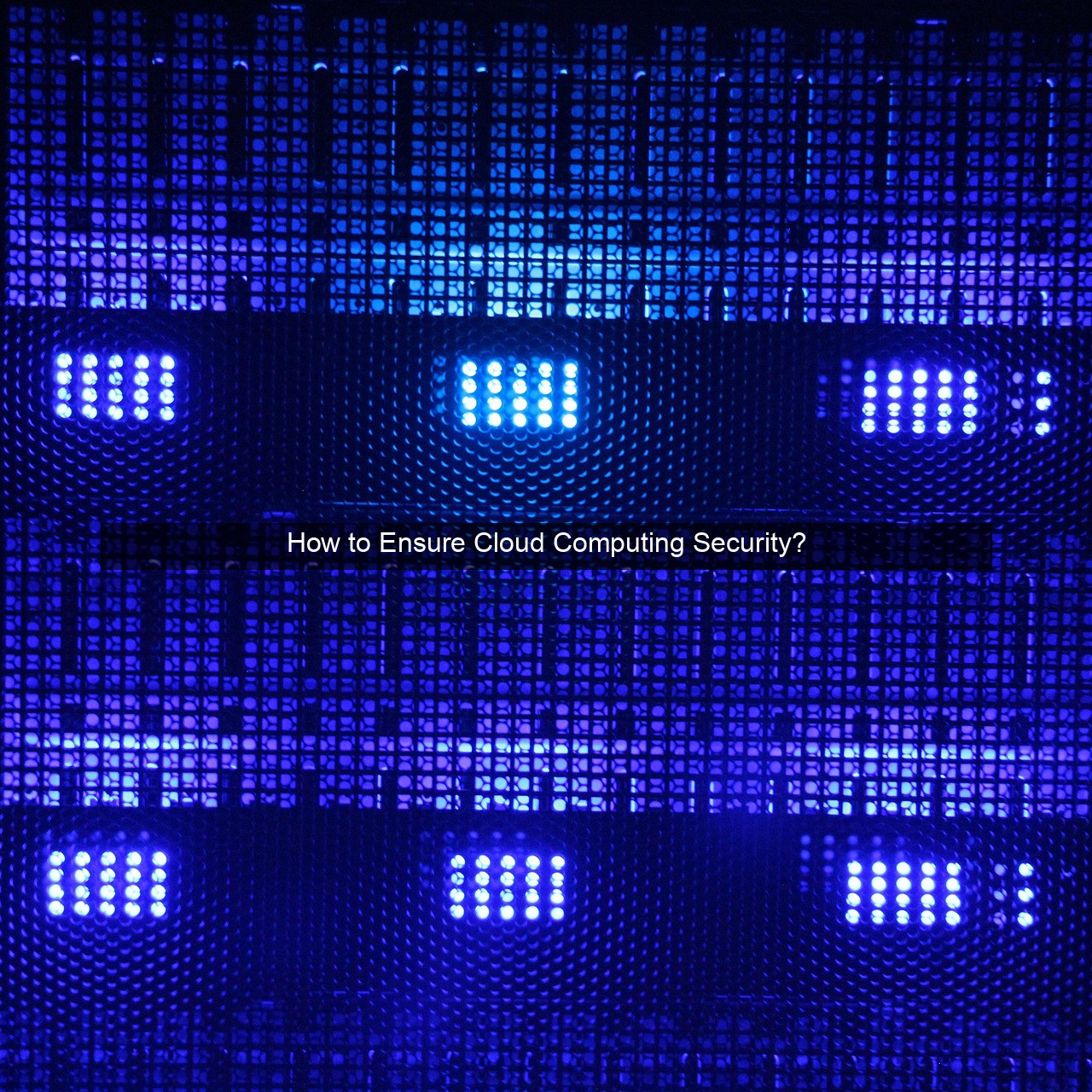How to Ensure Cloud Computing Security?

- How to Ensure Cloud Computing Security?
- How to Ensure Cloud Computing Security?
- Implementing Strong Access Controls
- Principle of Least Privilege
- Multi-Factor Authentication (MFA)
- Regular Security Audits
- Data Protection and Encryption
- Data at Rest and in Transit
- Data Loss Prevention (DLP)
- Key Management
- Maintaining Cloud Security Posture
- Vulnerability Management
- Incident Response Planning
- Security Awareness Training
- Conclusion

How to Ensure Cloud Computing Security?

The cloud has revolutionized how businesses operate, offering scalability, flexibility, and cost-effectiveness. However, this digital transformation comes with inherent security risks. Migrating sensitive data to a shared responsibility model requires a robust security strategy. Understanding these risks and implementing appropriate security measures is crucial for safeguarding your valuable assets in the cloud. Ignoring cloud security can lead to data breaches, financial losses, and reputational damage. This article will explore essential strategies and best practices to ensure your cloud environment remains secure.
Implementing Strong Access Controls
Principle of Least Privilege
One of the foundational principles of cloud security is the principle of least privilege. This dictates that users and applications should only have access to the resources they absolutely need to perform their designated tasks. Granting excessive permissions significantly expands the potential attack surface. By limiting access, you minimize the damage a compromised account can inflict.
Implementing the principle of least privilege requires careful planning and ongoing monitoring. Regularly review user roles and permissions to ensure they align with current job responsibilities. Automate the process wherever possible to reduce administrative overhead and maintain consistency.
Consider using role-based access control (RBAC) to simplify permission management. RBAC allows you to define roles with specific permissions and assign users to those roles. This makes it easier to manage access across a large number of users and resources.
Multi-Factor Authentication (MFA)
Multi-factor authentication (MFA) adds an extra layer of security by requiring users to provide multiple forms of identification. This typically involves something they know (password), something they have (security token), and something they are (biometric authentication). MFA significantly reduces the risk of unauthorized access even if credentials are compromised.
Implementing MFA should be a top priority for all cloud environments. Many cloud providers offer built-in MFA solutions, making it easy to enable this crucial security feature. Encourage users to adopt MFA for all their accounts, both personal and professional.
MFA solutions vary in complexity and user experience. Choose a solution that balances security with usability to ensure widespread adoption.
Regular Security Audits
Regular security audits are essential for identifying vulnerabilities and ensuring compliance with security policies. These audits should encompass all aspects of your cloud environment, including access controls, network configurations, and data encryption. Regular audits provide valuable insights into potential weaknesses and allow you to proactively address them.
Automated security auditing tools can streamline the process and provide real-time alerts. These tools can scan for misconfigurations, vulnerabilities, and suspicious activity. Integrate security auditing into your DevOps pipeline to ensure continuous monitoring.
Conducting regular security audits demonstrates your commitment to security and helps build trust with customers and partners.
Data Protection and Encryption
Data at Rest and in Transit
Protecting data both at rest and in transit is paramount in cloud security. Data at rest refers to data stored on physical media, while data in transit refers to data moving across a network. Both require different encryption methods to ensure confidentiality and integrity.
Encryption scrambles data, making it unreadable without the correct decryption key. Strong encryption algorithms should be employed for both data at rest and in transit. Ensure that encryption keys are securely managed and protected.
Regularly review and update your encryption practices to keep pace with evolving threats and best practices.
Data Loss Prevention (DLP)
Data Loss Prevention (DLP) tools and strategies help prevent sensitive data from leaving your control. These tools can identify and block sensitive data from being transmitted outside your network or stored in unauthorized locations.
DLP solutions can be implemented at various levels, including network, endpoint, and cloud. Choose a solution that aligns with your specific needs and security requirements.
Implementing DLP can help you comply with data privacy regulations and prevent costly data breaches.
Key Management
Effective key management is crucial for ensuring the security of your encrypted data. Encryption keys should be stored securely and protected from unauthorized access. Implement robust key management practices to safeguard your data.
Consider using a dedicated key management system (KMS) to simplify key management and improve security. A KMS provides a centralized platform for generating, storing, and managing encryption keys.
Regularly rotate your encryption keys to minimize the impact of a potential key compromise.
Maintaining Cloud Security Posture
Vulnerability Management
Regular vulnerability scanning and penetration testing are essential for identifying and mitigating security weaknesses. These assessments should be conducted regularly and cover all aspects of your cloud environment.
Vulnerability scanners can automatically identify known vulnerabilities in your systems and applications. Penetration testing simulates real-world attacks to identify exploitable weaknesses.
Address identified vulnerabilities promptly and implement appropriate security patches.
Incident Response Planning
Having a well-defined incident response plan is crucial for effectively handling security incidents. This plan should outline the steps to be taken in the event of a security breach or other incident.
The incident response plan should include procedures for identifying, containing, and eradicating threats. It should also address communication and recovery procedures.
Regularly test and update your incident response plan to ensure its effectiveness.
Security Awareness Training
Educating your employees about security best practices is essential for maintaining a strong security posture. Provide regular security awareness training to ensure that employees are aware of the risks and know how to protect themselves and your organization.
Training should cover topics such as phishing scams, password security, and social engineering. Reinforce training with regular reminders and simulated phishing exercises.
Investing in security awareness training can significantly reduce the risk of human error leading to a security breach.
Conclusion
Securing your cloud environment requires a comprehensive and proactive approach. Implementing strong access controls, protecting data, and maintaining a strong security posture are essential for safeguarding your valuable assets in the cloud. By following the best practices outlined in this article, you can significantly reduce your risk and ensure the confidentiality, integrity, and availability of your data.
What is the shared responsibility model in cloud security?
The shared responsibility model defines the security responsibilities between the cloud provider and the customer. The cloud provider is responsible for securing the underlying infrastructure, while the customer is responsible for securing their data and applications within the cloud.
What is the importance of data encryption in cloud security?
Data encryption is crucial for protecting data both at rest and in transit. It ensures that data remains confidential and unreadable to unauthorized individuals, even if it is intercepted or accessed.
How can I implement strong access controls in the cloud?
Implementing strong access controls involves using the principle of least privilege, multi-factor authentication, and regular security audits. This helps limit access to resources and minimizes the potential damage from compromised accounts.
| Security Measure | Description |
|---|---|
| Access Controls | Restricting access to resources based on user roles and permissions. |
| Data Encryption | Protecting data by encrypting it both at rest and in transit. |
| Vulnerability Management | Regularly scanning for and mitigating security vulnerabilities. |
- Implement strong passwords
- Enable multi-factor authentication
- Regularly update software
